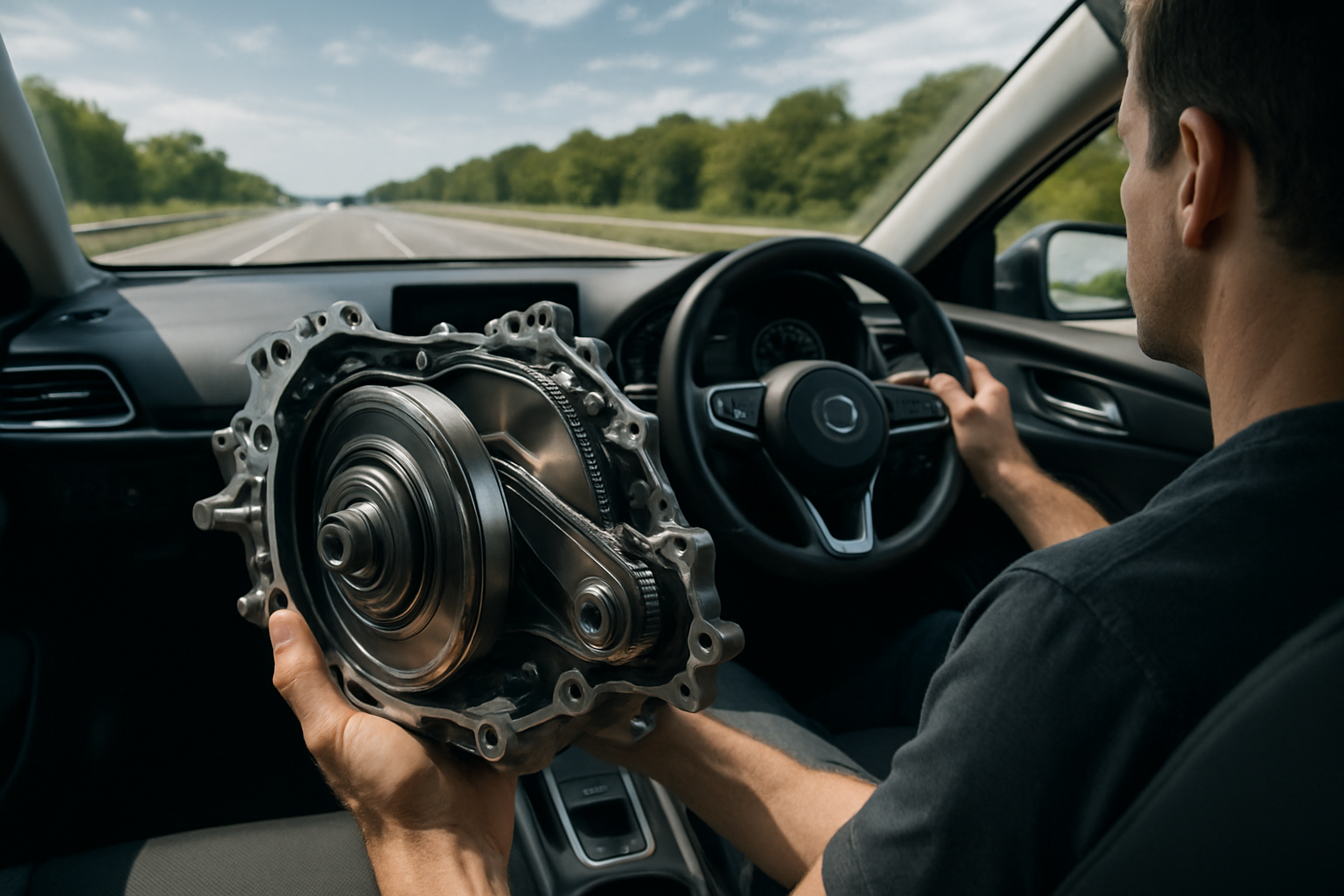Hydropneumatic Suspension: The Floating Revolution
Picture yourself gliding down a road, the bumps and imperfections beneath your wheels seemingly nonexistent. Your car moves with an almost otherworldly smoothness, as if floating on a cushion of air. This isn't science fiction – it's the reality of hydropneumatic suspension, a technology that has been revolutionizing ride comfort for decades. In this deep dive, we'll explore the inner workings, history, and future of this innovative suspension system that continues to captivate automotive engineers and enthusiasts alike.

The system’s ability to maintain a constant ride height regardless of load, coupled with its self-leveling capabilities, set it apart from conventional spring-based suspensions. As news of this innovative system spread, it caught the attention of other automakers and suspension specialists worldwide, sparking a new era in automotive comfort and handling.
How Hydropneumatic Suspension Works
At its core, hydropneumatic suspension replaces traditional steel springs with a system of interconnected fluid-filled spheres. Each sphere contains two chambers separated by a flexible diaphragm. The lower chamber is filled with hydraulic fluid, while the upper chamber contains pressurized nitrogen gas. As the wheel encounters bumps or dips in the road, the hydraulic fluid is forced into the sphere, compressing the gas. This compression acts as a spring, absorbing the impact and providing a smooth ride.
The genius of the system lies in its ability to adjust to different loads and road conditions. A central hydraulic pump maintains pressure in the system, allowing the car to automatically adjust its ride height. This self-leveling feature ensures optimal handling and comfort, regardless of passenger or cargo load.
Advantages Over Conventional Suspension Systems
Hydropneumatic suspension offers several key advantages over traditional coil or leaf spring suspensions. First and foremost is the unparalleled ride quality. The progressive nature of gas compression allows for a soft initial response to small bumps, while still providing firm support for larger impacts. This results in a ride that is both comfortable and controlled.
The system’s ability to maintain a constant ride height regardless of load is another significant benefit. This feature not only improves handling and stability but also allows for increased ground clearance when needed, such as when driving on rough terrain.
Additionally, hydropneumatic suspension provides excellent body control during cornering and braking. The interconnected nature of the system allows for anti-dive and anti-squat characteristics, reducing body pitch during acceleration and braking.
Evolution and Refinement
Over the years, hydropneumatic suspension has undergone significant evolution and refinement. Citroën continued to develop the system, introducing improvements such as dual-function spheres that combined suspension and damping functions. Other manufacturers, including Rolls-Royce and Mercedes-Benz, adapted the technology for their own high-end vehicles.
In the 1990s and 2000s, electronic control systems were integrated into hydropneumatic suspensions, allowing for even greater adaptability and performance. These systems could adjust suspension characteristics on the fly, based on driving conditions and driver preferences.
Challenges and Limitations
Despite its many advantages, hydropneumatic suspension is not without its challenges. The complexity of the system can lead to higher maintenance costs compared to conventional suspensions. Leaks in the hydraulic system can be difficult to diagnose and repair, potentially leading to costly repairs if not addressed promptly.
The weight of the system, particularly in earlier implementations, was another drawback. The hydraulic pump, fluid reservoirs, and associated plumbing add significant mass to the vehicle, which can impact fuel efficiency and performance.
Additionally, the unique feel of hydropneumatic suspension can be polarizing. While many drivers appreciate the cloud-like ride, others find the floaty sensation disconcerting, preferring the more direct feel of a conventional suspension.
The Future of Hydropneumatic Suspension
As automotive technology continues to advance, the future of hydropneumatic suspension remains uncertain. Many manufacturers have shifted towards air suspension systems, which offer similar benefits with potentially lower complexity and maintenance requirements.
However, the principles behind hydropneumatic suspension continue to influence suspension design. The idea of using fluid dynamics to improve ride quality and handling has been incorporated into various active and semi-active suspension systems.
Moreover, as the automotive industry moves towards electrification, there may be new opportunities to reimagine hydropneumatic suspension. Electric vehicles, with their heavy battery packs and need for efficient energy management, could potentially benefit from the load-leveling and adaptability offered by hydropneumatic systems.
Conclusion: A Legacy of Innovation
Hydropneumatic suspension represents a fascinating chapter in automotive engineering history. Its innovative approach to ride comfort and handling challenged conventional wisdom and pushed the boundaries of what was possible in vehicle dynamics.
While its future in its original form may be uncertain, the legacy of hydropneumatic suspension lives on. The principles it introduced – adaptive ride height, load-leveling, and progressive spring rates – continue to influence modern suspension design.
As we look to the future of automotive technology, it’s worth remembering the bold innovations of the past. Hydropneumatic suspension serves as a reminder that sometimes, thinking outside the box can lead to groundbreaking advancements that shape the industry for decades to come.





